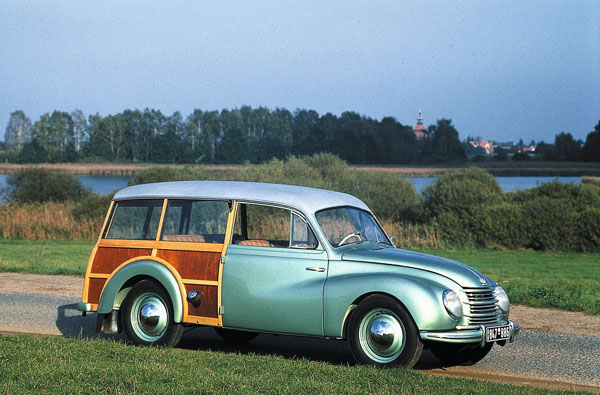J S Rasmussen, a Danish citizen and engineer, moved to Berlin in 1906 where he began the manufacture of weaponry and steam powered vehicles. His company, DKW, stood for Dampf Kraft Wagen (car propelled by steam). His factories were in Zschopau and later also Spandau, Berlin, where he had taken over the Slaby car works.
Rasmussen wanted a small lightweight engine to power bicycles and set out developing a two-stroke engine. After three years of development he came up with a tiny, 40cc unit of a mere 187 watts. It worked very well. He then used the same three initials DKW but re-registered the name as Der Knaben Wunsch – or The Boy’s Dream.
His next two-stroke engine, a 0.75kW unit, went into mass production and the name became known all over the world thanks to the performance of the motorcycles of that name. The boy’s dream became reality and the engine and initials were renamed again as Das Kleine Wunder (The Little Marvel), and as such it survived.
Before the two-stroke’s success Rasmussen also tried to manufacture an inexpensive battery-powered small car which appeared in 1920, but it was his small 500cc front wheel driven F-Series cars which were first shown at the Berlin Auto Show in 1931 that became real best sellers. Together With Benjamin in France, DKW can claim to have pioneered the field of volume production of inexpensive small two-stroke engines and front wheel driven cars.
In 1932 four German auto companies merged: Horch, Wanderer, DKW and Audi. Only the last, Audi, is currently available to today’s quality car buyer. The name of the new group became Auto Union, the name also used for the late 1930s 12- and 16-cylinder racing cars which, together with Mercedes-Benz, cleaned up on the racing circuits of Europe. From 1932 it was largely the successful sales of DKW cars which allowed the AU group to compete in Grand Prix races. After World War II, the name Auto Union was used for some DKW cars.
One of the first DKW cars, a 1932 F1 with original two-seat open factory coachwork, is in New Zealand. It is the only F1 known to exist outside Europe today and one of 30 known survivors.
Before the F1 and subsequent F2 to F8, prewar DKW-built rear drive two-stroke cars were entered in many Continental races and hill climbs. They had so much success that at one point they wanted to change the name to DKB, or Der Kleine Bergsteiger (The Small Mountain Climber). But ‘DKW’ won yet again.
The favourite of the inexpensive post-F1 models had fabric covered, light wooden body frames and for that reason, and because of the often cheap-sounding two-stroke blub-blub-blub’ noise of their engines, they were nicknamed the Duitse Kinder Wagens (The German Prams).
After the war, all that remained of Auto Union’s facilities was a single factory in the western sector of Berlin that had been previously used for building the wooden coachwork fitted to the little marvels. All other DKW and Auto Union factories had been dismantled and carted off to Russia or used for such things as the tooling for the East German IFAs, Barkas, Framos and Zwickaus.
Technically, the Zwickau, built in one of the former Auto Union works, was a straight copy of the pre-war two-cylinder DKW F8; the Tabrant was also a development of the pre-war DKW F8. In 1996 production of Auto Union cars under the DKW badge finished. For the Germans, and for some other Continentals, the name DKW is still magic.









